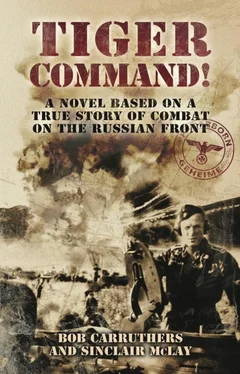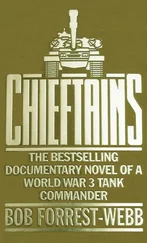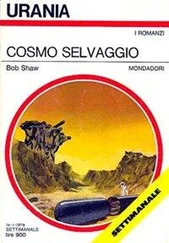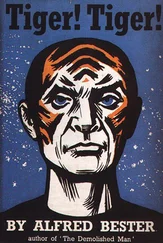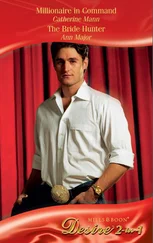Korsak noticed an enhanced level of interest as he began to detail an unusual feature of the plan.
“Those of you who have been responsible for their construction will know we shall also be using dummy tanks during the forthcoming operation. Their purpose is, of course, to draw the attention of the enemy air forces to the dummy tanks and has the aim to deceive the enemy concerning the disposition, types, and character of our real tank activity. They will lure the Stukas away from our tank forces, which will be fully concealed.
“As a rule, all vehicles in attack positions should be placed under the roofs of sheds and barns, leaving the dummy tanks exposed to draw in aerial attacks in the open. Where there is an insufficient number of such structures, or where the size of the vehicles makes it impossible to place them in the existing shelters, it will be necessary to build shelters resembling the existing structures in the given locality. The roofs of these shelters must be covered with a layer of hay so that they will not look any different from the roofs of the existing structures.
“These camouflage structures may be built either as additions to existing structures or as separate structures. The separate camouflage structures should be situated along laid-out paths, and the tracks of the caterpillars which lead to the place where the tanks are stationed should be swept or dragged so as to resemble an ordinary road.
“Woods, orchards, and brushwood can be used for camouflage, but leafy woods offer the best concealment in summer and completely hide the vehicles from air observation.
“Finally, if no covers of any kind are available, the vehicles should be covered with branches, straw, hay, and the like, and earth placed on top in irregular patches. When the tanks are stationed in open, flat country, then the camouflage of the tanks can be achieved by scattering here and there patches of pine needles, straw, and rubbish… The ground should also be laid bare, as tanks which are painted a dark colour will not be easily discovered against a dark background, either by visual air observation or by the study of aerial photographs.”
Korsak was not a man to leave any detail unattended, and as he continued with his briefing his audience was becoming more and more impressed by the meticulous manner in which he approached the preparations.
“In open country, the ground assumes a naturally mottled appearance; when the tank is stationed in a gully, it is to be covered with solid green covers of any kind of fabric or matting painted green and brown, or by the regulation net, with green and black patches attached to it.”
His audience expected this to be the end of the briefing, but they had not worked with Kommissar Dimitri Korsak. There was much more to come.
“Now, comrades, let us consider our tactics…”
*
The day at Paderborn was an important one. Instead of firing from fixed positions, the crew was now to practice firing from the tank itself. In order to locate the target, they roamed over the range. Bobby Junge was sure he had a grip of her now.
For von Schroif, the thought process was quite simple: “Preparation! Observation! Penetration! And don’t push her too hard, let her live within herself.”
Hans eventually found the target they were searching for◦– an old French Char B in a stationary position.
“Target spotted. 700 metres.”
“800,” replied Michael, giving his best estimate.
“Average 750,” replied Hans. “Anti-tank 39.”
“Mo-Fu-Fa-La-Ba,” replied the crew in turn as hatches and lamps were checked before firing, after which Otto Wohl loaded and Bobby Junge stopped her in her tracks.
Then von Schroif gave a new turret position and Knispel rotated the turret, Otto set the gear emergency lever up, Bobby accelerated, and Karl set the selector lever for the turret position. Then more measurements.
“750.”
Michael adjusted range, aiming for the centre of the target.
“Fire!”
“Direct hit!” exclaimed von Schroif proudly, but he had not really expected anything else. “Satisfying, but strangely unsatisfying,” he thought. “We need to be a little more stretched.”
“Wendorff,” he barked through the intercom, “request moving target!”
Wendorff duly did so and the instructors indicated that they would roll an old Soviet truck down the hill.
“Junge, take her back 500 metres.”
This was ambitious. Taking a shot at a moving target over 1,200 metres was not usually attempted in the field. After reversing the prescribed 500 metres, Bobby Junge then positioned the tank in the direction of the target.
Hans, through his binoculars, could see the truck being readied and then, with an almighty heave, being pushed down the hill by a small team who scattered like rabbits, all running back up the hill as fast as they could.
Now this was going to be difficult, and not just because of the distance, but because the truck, as it hurtled down the hill, would be accelerating. Normally, the calculations for hitting a moving target involved estimating the speed of the target and deciding how far in front of the target to aim the shot. In firing at a moving target at over 200 metres, the gunner did not aim at where the target was, but where it was going to be!
Many would consider this request to be folly, the result of overconfidence or cockiness, but the opposite was in fact true. Hans knew that, if you pushed yourself further on the training ground, anything within those parameters that were encountered on the battlefield could be approached with more confidence. He also knew that, at these kinds of distances and circumstances, the science would be of absolutely no help. Gunnery in this situation was more of an art, and Michael Knispel was an artist. A landscape artist whose brush was his gun, his shells his paint.
Knispel estimated the speed of the truck at 10 km/h, giving a lead on the main reticule◦– by the book◦– of three notches. But the target was starting to speed up. Throw the book out the window! Just feel the notches.
“Ready?”
“Target acquired,” answered Knispel.
“Fire!”
The high-explosive round hurtled towards its target with the expectant instruction team watching… waiting… from the safety of their foxholes. Then, boom! A direct hit with high-explosive and the target was blown to smithereens! A loud cheer, not just from the crew in the tank, but also from the watching instructors who were enjoying the novelty, and the fireworks!
On the plains of the Kerch peninsula the fireworks were very real; the green flares rising into the pre-dawn sky indicated that the combat teams had done their work. Voss prepared to push the attack. He thought very briefly that it would have been good to get von Schroif’s input, they had worked as a very effective team since the invasion of Poland, but he reassured himself that the plan was a sound one, and he was sure that the mission could not have been compromised.
The battalion workshop had worked overtime, and the new batch of Panzer IVs with the long-barrelled Panzerkamfwagenkanone had arrived at the railhead and were being rushed to the front. New tanks were heartily welcome, but with them, Voss knew only too well, would come new crews, unused to the ways of the frontline. A repeat of the tactics which had brought him a much lauded victory at Hill 15 was out of the question. Ivan was a fast learner and would be vigilant, watching for a repeat. Voss was ordered to force the issue, and his objective from division was to seize the vital bridge and push on to the town of Chersoniev.
The officers gathered to hear the briefing seemed suddenly so much younger. Had it not been so depressing, Voss would have laughed to himself as he realised that was because they were younger. The days when mature and experienced officers like von Schroif could be relied upon to instinctively understand their duties and define their own parameters were over. As each day took its bloody toll, the dismal reality was that the experienced officer cadre was becoming thinner and thinner. Looking at the circle of young faces, Voss began to carefully outline the battle plan once more.
Читать дальше
